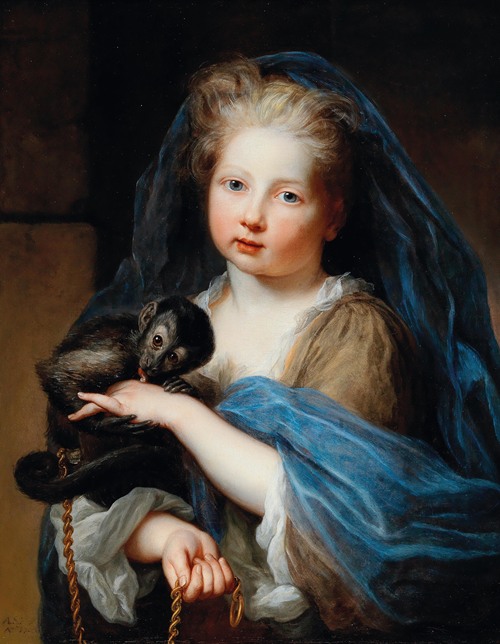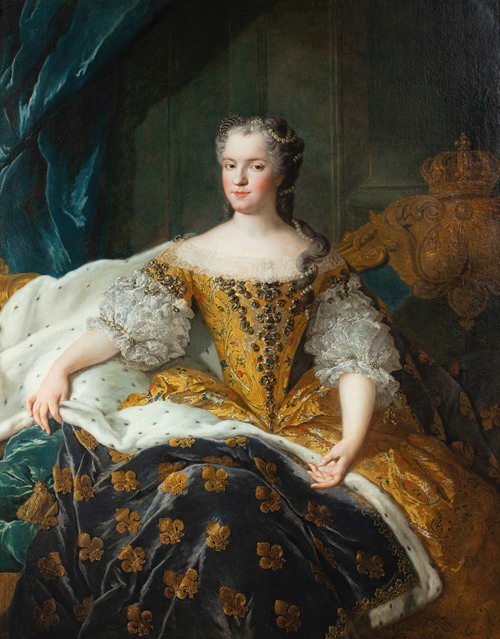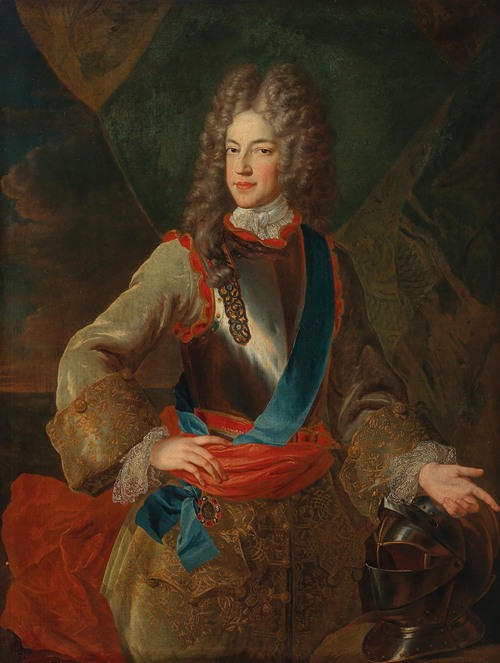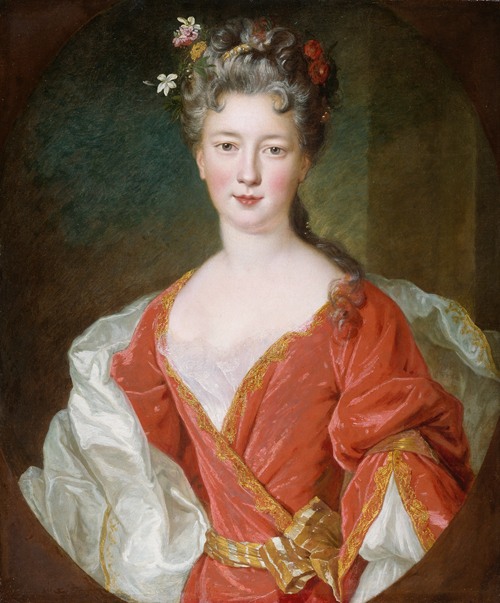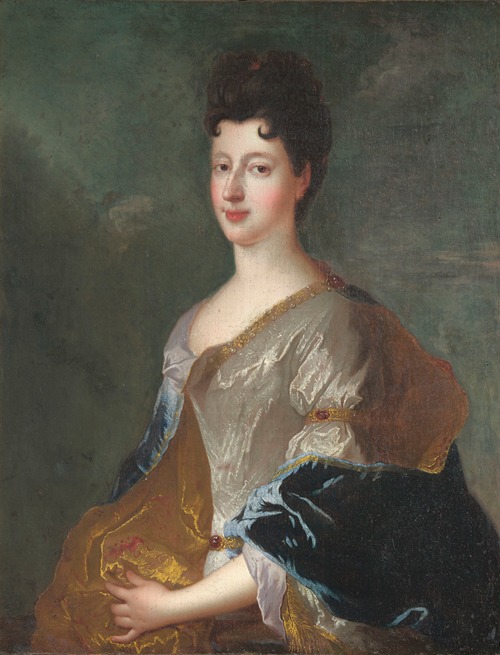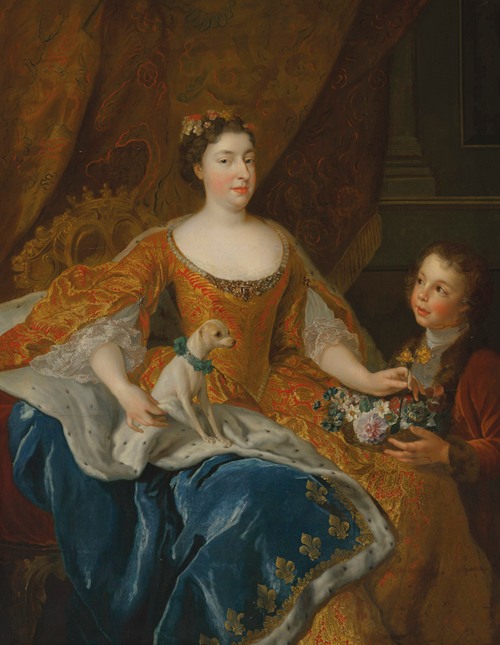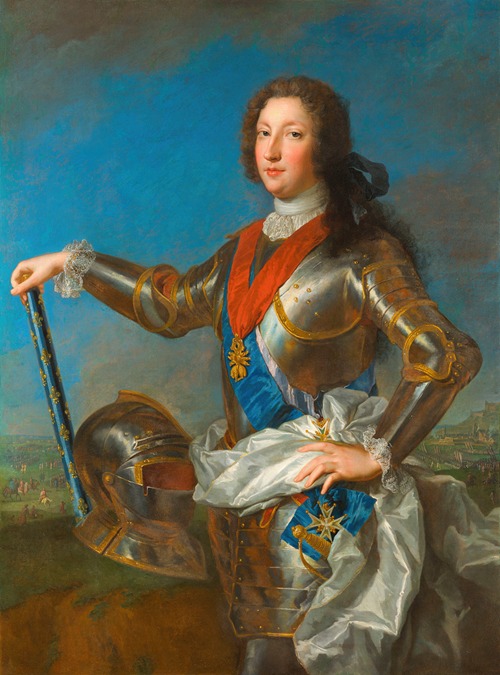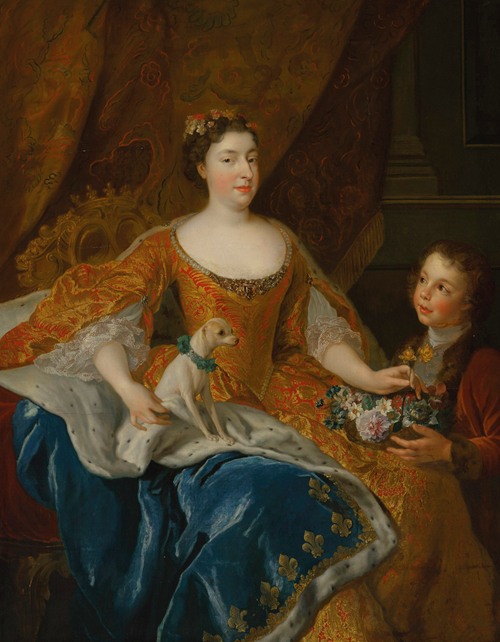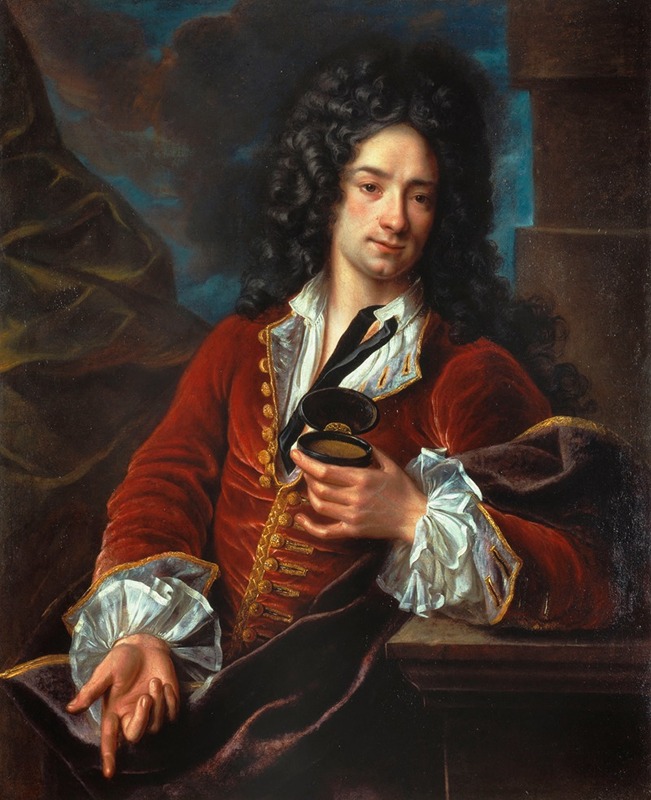
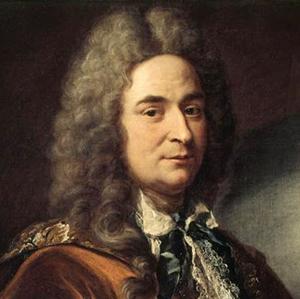
Alexis Simon Belle was a French portrait painter, known for his portraits of the French and Jacobite nobility. As a portrait artist, Belle's style followed that of his master François de Troy, Hyacinthe Rigaud, and Nicolas de Largillière. He was the master of the painter Jacques-André-Joseph-Camelot Aved (1702–1766).
Belle was born in Paris, the second child and only son of Jean-Baptiste Belle (born before 1642, died 1703), also a painter, and of Anne his wife (died 1705).
Belle studied first under his father, then continued his training in the studio of François de Troy (1645/46-1730), a painter at the court of King James II in exile at Saint-Germain-en-Laye. He began to produce work at Saint-Germain in the years 1698 to 1701. This was a period of peace between France and Great Britain, and Jacobites could cross the English Channel carrying portraits of James Edward Stuart (who at his father's death in 1701 became the Jacobite claimant to the British throne) and his sister Princess Louisa Maria. Troy was then James II's only court painter and needed the help of Belle, his best student, to produce all the portraits ordered from him.
In August 1700, Belle won the Prix de Rome, but went on working at Saint-Germain instead of travelling to Italy.
On 12 November 1701, Belle married the miniature painter Anne Chéron (c. 1663–1718), when he was described as peintre ordinaire du Roy d'Angleterre (painter in ordinary to the King of England). As King James II had died a few weeks before, this was a reference to his son James Edward, who had been proclaimed king of England, Scotland and Ireland by King Louis XIV.
Belle became the principal painter to the Jacobite court, where he and his wife settled and worked. After war broke out again between Great Britain and France in 1702, their portraits of James Edward Stuart ('The Old Pretender') and his sister the Princess Royal continued to be smuggled across the Channel, and Belle did other work for members of the court and for the English Augustinian convent in Paris. Several copies exist of his portrait of James Edward Stuart in armour and standing beside the English Channel, on which there are warships, pointing towards the cliffs of Dover.
Belle's most famous portrait of James Edward Stuart dates from 1712, just before he left Saint Germain for Lorraine, and shows him in a tent in a military outfit. This became the standard image of the Old Pretender and was much copied. In an engraving of the painting by François Chéreau, Belle is described as peintre de S. M. Brit. (painter to His Britannic Majesty). In 1713, Chéreau also engraved a portrait by Belle of Princess Louisa Maria (who had died in 1712) which is now in Sizergh Castle, Cumbria.
After the Pretender had left Saint Germain, Belle stayed there and painted some of the diplomats connected with the Treaty of Utrecht. However, in 1714 he joined James Edward's new court at Bar-le-Duc.
During the years 1716 to 1719, Belle received many commissions from Jacobites in exile after the unsuccessful rising of 1715. By then, the Old Pretender was himself living in Italy.
During the 1720s, Belle's work was increasingly for the French nobility. He painted the young King Louis XV, and much of his work was engraved, showing that he had by then a high status in France. He painted Louis XV's one-time fiancée Mariana Victoria of Spain, whom he later did not marry; he worked also for Jacobites in France, and as late as 1724 signed a portrait of Marie-Charlotte Sobieska (James Edward Stuart's sister-in-law) pictor regis Britann (painter to the king of Britain). In 1731, Belle made two copies of portraits by David of James Edward Stuart's two young sons, Prince Charles Edward Stuart and Prince Henry Benedict Stuart.
Belle's first wife, Anne Chéron, died in April 1718. On 12 January 1722 he married as his second wife the engraver Marie-Nicolle Horthemels (born 1689, died after 1745), herself a painter and engraver. Together, they had two sons, born in 1722 and 1726, and a daughter born in 1730. With his new wife, Belle lived both among the remaining Jacobites at Saint Germain, where he owned property, and in Paris in the rue du Four.
His second wife's sister Louise-Magdeleine Horthemels (1686–1767) was an important engraver in Paris for some fifty years and was the mother of the designer, engraver, and art critic Charles-Nicolas Cochin (1715–1790). Another of his wife's sisters, Marie-Anne-Hyacinthe Horthemels (1682–1727), worked in the same field and was the wife of Nicolas-Henri Tardieu (1674–1749), an engraver who was a member of the Royal Academy of Painting and Sculpture. The Horthemels family, originally from the Netherlands, were followers of the Dutch theologian Cornelis Jansen and had links with the Parisian abbey of Port-Royal des Champs, the centre of Jansenist thought in France.
Belle died at Paris in 1734.
Belle's son Clément-Louis became a history painter. When he died in 1806, he was described as "Rector of the Special School of Painting, Sculpture, Architecture and Engraving, and Professor of Design to the Imperial Manufactury of Gobelins".
